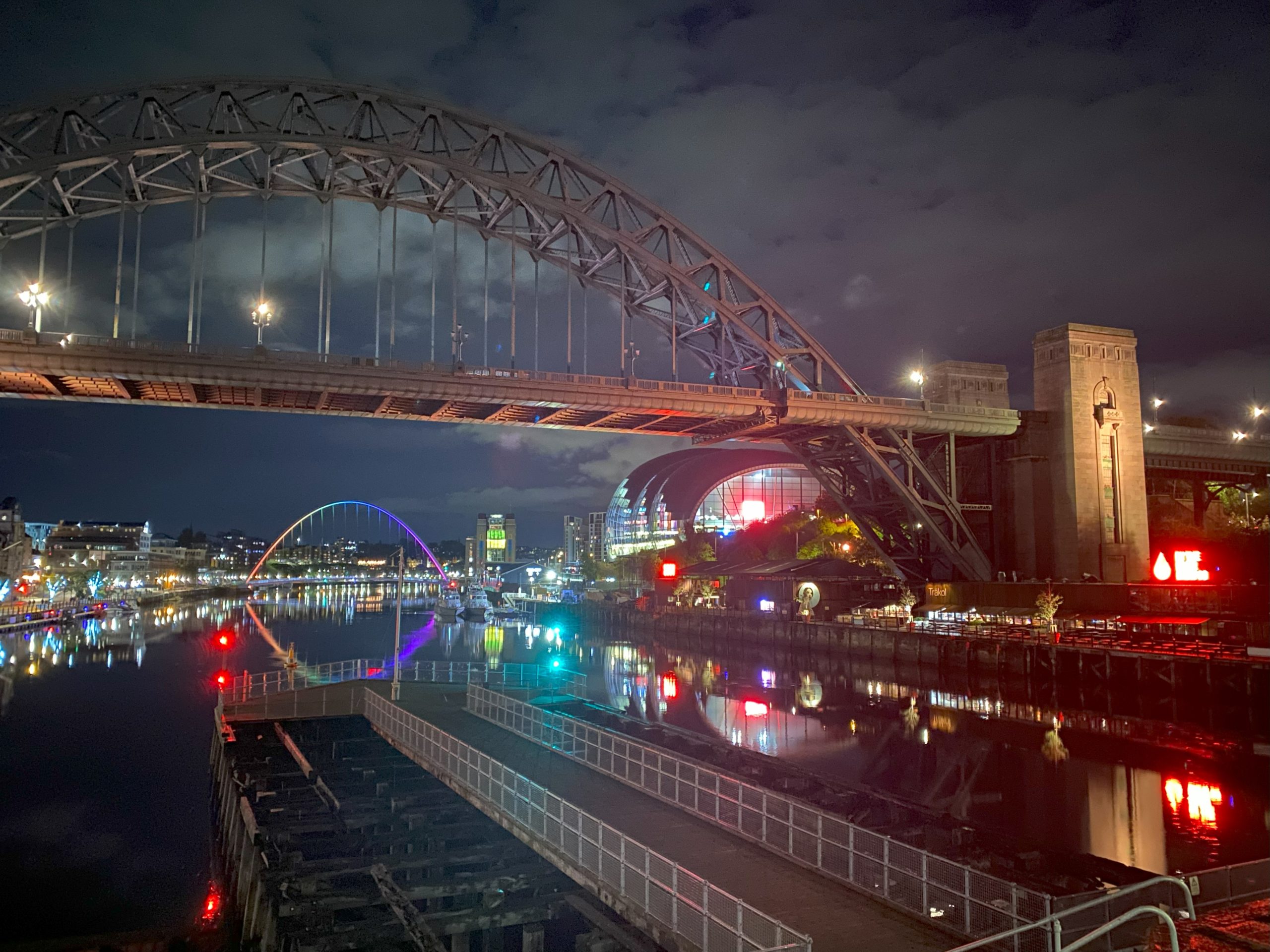
Liverpool Philharmonic with conductor Domingo Hindoyan started their season this week with a double header masterclass of 20th century classics. The crowning glory was surely Copland’s Piano Concerto played with seemingly effortless mastery by Paul Lewis. It was tremendous stuff and I saw it twice!
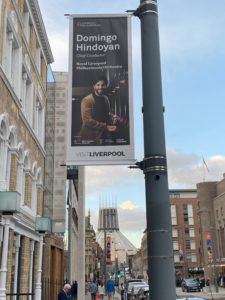 Continuing on the theme of rare works. Aaron Copland’s Piano Concerto is one of those that doesn’t get played that much[1]. Hence, when it was programmed for consecutive nights at the Liverpool Philharmonic Hall and the Glasshouse (formerly Sage) Gateshead, it would have been churlish for me to spurn the opportunity for an expansive trip north.
Continuing on the theme of rare works. Aaron Copland’s Piano Concerto is one of those that doesn’t get played that much[1]. Hence, when it was programmed for consecutive nights at the Liverpool Philharmonic Hall and the Glasshouse (formerly Sage) Gateshead, it would have been churlish for me to spurn the opportunity for an expansive trip north.
Tom and Jerry music
I have a bit of history with Copland’s Piano Concerto. A former girlfriend (from way back in the late 90s) casually remarked that it sounded like Tom and Jerry music! I remember taking umbrage and being a bit defensive[2]. At the time, as someone besotted with Appalachian Spring, I possibly wasn’t ready to love the work and her view (which I probably wrongly interpreted as criticism) didn’t help. Deep down, I couldn’t help thinking she had a point and no doubt through a slightly awkward embarrassment, I avoided playing it.
Over the last decade and more, as I have moved beyond populist Copland and fully embraced his lesser-known modernist output, this is the one work that I have unerringly remained aloof too. It was like a distant relation that you would see across the room and perhaps acknowledge with a casual wave. By contrast, with other, harder to love Copland (like Symphonic Ode, Orchestral Variations and Statements) my each and every listen would seem like the greeting of a long-lost friend – a warm embrace, a slap on the back, followed by playful kidney shot!
From time to time, I would listen to a couple of CD versions that I have but my opinion didn’t change much. It was like a guilty secret. How could a Copland lover be so indifferent to his Piano Concerto?
That said, I always try to keep an open mind. Furthermore, my preparation for Copland concerts these days is nothing less than meticulous. So, I made sure I did my homework and embarked on a complete immersion into Copland’s Piano Concerto. I set time aside and properly listened to all 8 recordings (that are easily available) and have ordered the Noel Lee vinyl version on Ebay. I also listened to other American piano concertos by Samuel Barber, Gershwin, George Antheil, Ned Rorem, Gian Carlo Menotti and Bernstein’s Symphony No 2 The Age of Anxiety.
And would you know it? The deep dive worked. For all those years, I don’t know what I have been listening to!
Why then had I stayed so immune to this work’s charms for so long? OK, here are my thoughts.
- Is there another work in classical music that begins so clamourously and dramatically and then goes so silent? I think that change of pace is a cleverly disguised curveball. The opening suggests that it’s the sort of work that you could wash the dishes to. It’s not!
- Perhaps I have always expected a bit more virtuosity in the first movement. And, of course, one tends to associate virtuosity with fast fingers and lots of notes. The thing to remember (and no doubt I forgot, especially with Copland) is that the space between the notes is just as important as the notes themselves.
- My “go to” version of the work has always been Copland playing and Bernstein conducting with the NY Phil. I now realise that this isn’t the best recording and has been roundly trumped by several others (most notably Garrick Ohlsson (piano) and the San Francisco Symphony Orchestra and Michael Tilson Thomas on the RCA label and Xiayin Wang (piano) and Royal Scottish National Orchestra and Peter Oundjian with superb Chandos engineering).
- For most people at the two concerts this week, this will have been their first experience of Copland’s Piano Concerto. That is great fortune because in the concert venue you are more likely to be fully invested and concentrating in that first movement which is pure late night Copland introspection. You’ll also be more likely to be dazzled by the second movement’s “snappy number”. I have only seen Copland’s Piano Concerto performed once, by Marc Andre Hamelin at the Copland Centenary celebration at the Barbican. I’m sure it was technically perfect, but it left virtually no impression. Years later, I discovered possibly the reason why. In two separate interviews Hamelin is asked about the music or composers he doesn’t like. He didn’t hold back:
From Pianistique.com in 2006
There are also worlds that I don’t like, for example Copland’s music leaves me cold, probably because I’m not American?”
and
From thecounterpoints.com in 2013
I don’t feel any particular attraction to Copland, for example. I mean, I certainly recognize its worth, his aesthetic was very secure, and of course, I know that his work touches a lot of people, but it just doesn’t touch me.”
Difficult music made to sound easy

Pianist Paul Lewis
Copyright: Kaupo Kikkas
I obviously needed to see this work performed by someone who loves it and plays it with heart and soul. In Paul Lewis, I have found that person! According to the programme notes, he has been wanting to play Copland’s Piano Concerto since he was 15 years old when he heard an older student perform it at Chetham’s School of Music in the 1980s. For someone so associated with Schubert and Beethoven this was quite a departure, but he revelled in it. I think even Copland would have been mightily impressed by the “grotesquerie” he brought to the playful second movement. I am delighted that the Thursday night concert at Philharmonic Hall was being recorded for playing on Radio 3. These were definitely performances that I want to relive.
At the after concert talk in Liverpool, Hindoyan confessed that his view on why the work isn’t performed more is that it is so difficult for the soloist, the conductor and the orchestra. He said
It’s really difficult but needs to sound as if it’s easy. So, it sounds effortless like 1920s jazz”.
This fended off my one minor criticism. The second movement is so much fun that I would have loved to have seen more smiles on the faces of the orchestra. Certainly, Hindoyan and Lewis were enjoying themselves. In retrospect, perhaps the lack of the reflection of the animation in the music on the faces of the orchestra can be excused by the fact that it was the first night of the season, a new work to most and one so technically demanding. Hindoyan said that he felt “150-200% connected” when he is working with the Liverpool Philharmonic and certainly that commitment came out in the full ensemble playing across both nights.
Hindoyan is a class act. Such dynamism, charisma and presence. All I can say is that there must be something in the air in Venezuela! The Liverpool Phil regulars know only too well that they have lucked out and since Hindoyan has just recently signed a 5-year extension, they’ll have this special talent until 2028. Oh, what I wouldn’t give for a bit of levelling up and to have such an orchestra and conductor regularly plying their trade from Bristol?
Suprising nuances revealed
By giving myself the liberty of properly listening to Copland’s Piano Concerto, I finally found all the nuances that I have previously missed. At Philharmonic Hall I was sitting in a box to the left of the stage. This was perfect positioning as I got a great view of the alto/soprano saxophonist Robert Buckland, the six strong percussionists (who were busy in all the pieces) and the celesta player Ian Buckle. Who knew that there was a celesta featured in Copland’s Piano Concerto? It’s only a small part but as you would expect, it lends an ethereal quality to the piano blues. I’ll make sure I listen out for that in future. I was also impressed by the romantic sweep of the strings not unlike that achieved in the Clarinet Concerto– that was a real surprise.
I was also struck just how Ivesian some of the music is towards the end of the first movement. It seems like there are three independent tunes going on at the same time but with different time signatures. The piece was written in 1926, some years before Copland was aware of Ives but is one of those moments when you can certainly hear the influence of Stravinsky.
In the Q&A Hindoyan threw in something else that I hadn’t really considered – Bernstein’s debt to Copland’s Piano Concerto in his own West Side Story. I certainly hear echoes in the fast, rumbunctious orchestral playing. Listen from 10:15 to 10:40 in the Copland / Bernstein YouTube version below. But more jaw dropping is his assertion that Bernstein got the idea for the tune for Maria from Copland’s Piano Concerto! I need a bit more convincing on that one, but I will be all ears in future listens.
Comedy Shorts
And what about the Tom and Jerry comparison? I still think it’s very apt and have come around to the grown-up realisation that there is no shame for Copland if he was amongst those composers who provided some of the inspiration for this cartoon’s soundtrack which wasn’t created until 1940 (14 years after the Piano Concerto was composed).
 It has got me thinking though. Wouldn’t this music be absolutely perfect as accompaniment to an animated feature or jaunty silent comedy? Copland painted brilliant pictures in his music, and you can definitely conjure up images of Charlie Chaplin, Harold Lloyd, the Keystone Cops, bustling sidewalks and traffic jams, skyscrapers and the odd banana skin tumble!
It has got me thinking though. Wouldn’t this music be absolutely perfect as accompaniment to an animated feature or jaunty silent comedy? Copland painted brilliant pictures in his music, and you can definitely conjure up images of Charlie Chaplin, Harold Lloyd, the Keystone Cops, bustling sidewalks and traffic jams, skyscrapers and the odd banana skin tumble!
In a similar vein, Copland’s false ending puts me in mind of the Laurel and Hardy short Brats. In this film the protagonists are desperately trying to get kid versions of themselves to fall asleep only to inadvertently keep waking them up. The Piano Concerto seems to come to an end (with serenity Like Appalachian Spring, Quiet City or Music for the Theatre) only to start again just like those mischievous brats taking their hapless parents to breaking point.
Shortly afterwards there’s another great Copland ending which is akin to a toppling down the stairs mishap with all the plates shattering to smithereens. You can almost hear the march of Mammy Two Shoes and the shriek “Thomassssss!”
The Crowd Pleasers
There were other works played. All done wonderfully well but these were more traditional favourites. Bernstein’s Symphonic Dances from West Side Story was done superbly. They performed this at the Proms, which proves that practice makes perfect. Great timing for me as I am lucky enough to be taking the family to Paris in a months’ time to see the musical – I can’t wait! A special mention here for harpist Elizabeth McNulty. At Philharmonic Hall, I was in the perfect spot for watching her elegant work during the Somewhere sequence. And how about that trumpet (Russell Bennett or Richard Cowen?) – it was spine tingling brilliance.
If Copland’s Piano Concerto is now akin to a long-lost friend, George Geshwin’s Rhapsody in Blue (as well as West Side Story) is definitely one of those friends for life! (In this case the friend lives in the next street and therefore you see them on a much more regular basis!). I was struck by just how different the soloists fingering is compared to the Copland. There is so much cross hands playing in the Gershwin and none in the Copland. Perhaps this was Copland’s intention – to put stylistic clear water between himself and his Brooklyn rival? Or perhaps it was Copland just making it more simple for himself and others to play? Who knows?
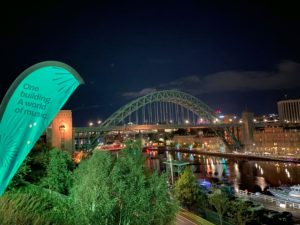 The biggest cheers came for Rachmaninov’s Symphonic Dances. Sergei Rachmaninov is of course celebrating his 15oth Birithday this year[3]. I love this piece. It’s 20 minutes of incredible music. The only snag is, that the full work is 35 minutes long! Copland didn’t have much time for Rachmaninov’s self-pity and Nadia Boulanger could hardly hide her disgust for his music. I’d certainly take a pair of scissors to some of the string music in this work but those horns in the first movement and that incredible nerve-jangling finale are absolutely up there with the best that music has to offer.
The biggest cheers came for Rachmaninov’s Symphonic Dances. Sergei Rachmaninov is of course celebrating his 15oth Birithday this year[3]. I love this piece. It’s 20 minutes of incredible music. The only snag is, that the full work is 35 minutes long! Copland didn’t have much time for Rachmaninov’s self-pity and Nadia Boulanger could hardly hide her disgust for his music. I’d certainly take a pair of scissors to some of the string music in this work but those horns in the first movement and that incredible nerve-jangling finale are absolutely up there with the best that music has to offer.
As a frequent attender of rare Copland concerts, I am used to picking up on a fluffed note here and there and simply accepting that as par for the course. But this was in another league – exceptional playing by all concerned.
Both nights were brilliant. In Liverpool it was a sell out whereas there were plenty of spaces at the Glasshouse which was a shame. I’d made a bit of a mess up with my seat selection for that concert (I was to the right of the piano, which goes to show that you shouldn’t buy a ticket late at night) and simply had to move to one of the spare seats back in the stalls before the Copland. However, this was not the only incident of musical chairs. Unfortunately, someone in the admin team made an error on the programme which suggested that the interval came after the Copland. As a result, numerous people left the auditorium at this point and had to slink back in when they realised that the band was already playing Rhapsody in Blue. That had a bit of a Laurel and Hardy feel as well! Even Domingo Hindoyan looked around at one point to see what was going on.
This was the only hitch over two great nights, in two great cities with Liverpool’s very own Northern Lights!
Footnotes:
[1] At the post concert Q&A I made the statement that the last time that Copland’s Piano Concerto was played in the UK was at the Centenary Concert at the Barbican in 2000. I was wrong! It’s been played three further times – Manchester (2000), Cardiff and London (both 2013). It you are interested in doing searches on past concerts like this then try the Boosey and Hawkes Performance Search.
[2] I am eternally grateful to the former girlfriend who likened Copland’s Piano Concerto to Tom and Jerry music. She not only introduced me to the music of Arvo Pärt and Nitin Sawhney but after we had split up, she invited me along as a friend to a party hosted by my future wife!
[3] It’s also Gershwin’s 125th birthday this year. Orchestras around the world please take note – 2024 is the 150th anniversary of the birth of Charles Ives and 2025 is Copland’s 125th. A great opportunity to showcase even more brilliant and woefully underplayed music from these two giants.

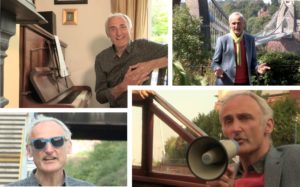
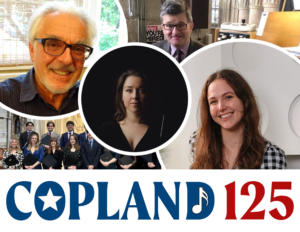
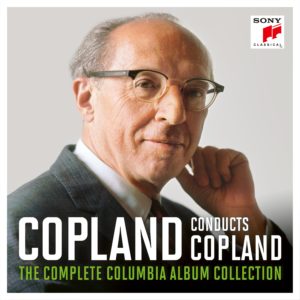





Blog Comments
Kevin Lindegaard
29th September 2023 at 8:46 pm
Having just listened to the Paul Lewis performance of Copland’s Piano Concerto and Rhapsody in Blue again on Radio 3, I must say that the recording is so good that they would make an absolutely fabulous CD or stream release. Brilliant engineering on top of everything else. Well done, one and all!